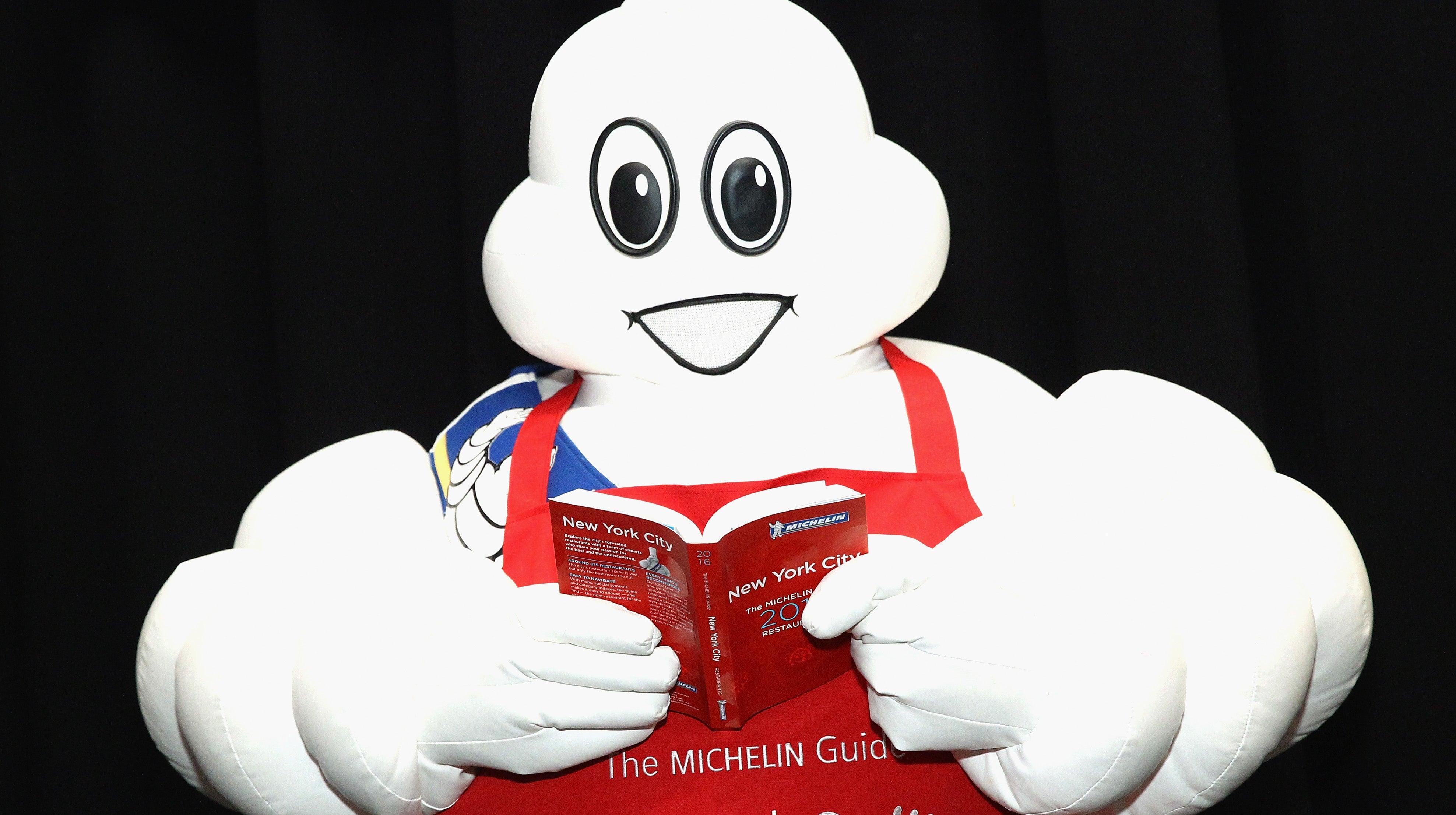Stop Worrying About Michelin Stars
You don't have to trust the Michelin Man with your dining decisions.
It's currently Restaurant Week here in Chicago, an annual chance for me to sneak my way into some of the city's fanciest joints at an affordable price—and a few of the options on this year's list boast their Michelin stars alongside their prix fixe menus. It's a longtime acclaim that still makes me laugh every time I think about it. I picture the Michelin man himself delicately nibbling on a gourmet meal then loudly declaring, "This is worthy of one of my coveted stars!" while Frisbee-ing a star (pulled out of one of his many tire rolls) straight to the restaurant's head chef.
Why, you might have wondered but were too afraid to ask, is a tire company rating restaurants? And why should I care what the tire company thinks?
A brief history of the Michelin Guide
The French tire company Michelin got its start in 1889, when automobiles were still a burgeoning technology. The original Michelin Guide was created by the brothers behind the company as a sort of marketing tool to get people to buy cars and, in turn, car tires. Essentially they were saying, "Look at all these great places to eat and drink! If only you had a way to get to them, hmm..."
In the 1920s, the Michelin brothers started hiring mystery diners (now known as restaurant inspectors) to anonymously review the restaurants featured in the guide, and in 1926 the first Michelin stars were awarded—five years later the three-star system was born. In later years more signifiers were added to the guide, like a fork and spoon symbol rating comfort a quality, icons indicating notable drink lists, and the recognition of high-quality but low-cost food with the "Bib Gourmand" award, named after the Michelin Man himself (did you know his name is Bibendum?).
What does a Michelin Star mean?
There are five considerations made by restaurant inspectors to determine a spot's star rating:
- Quality of the ingredients used
- Mastery of flavor and cooking techniques
- The personality of the chef in his cuisine
- Value for the money
- Consistency between visits
Unsurprisingly, France has the most Michelin stars at 628, with the United States far behind at 169. Still, that's not too shabby considering U.S. restaurants weren't eligible to win stars until 2005, according to Escoffier.
The pitfalls of the Michelin Star rating system
Even though the personality of the chef is one of the considerations, the guide very plainly states: "There is no such thing as a Michelin-starred chef." So if the head chef of a restaurant leaves, they're back to being just a plain ole chef who needs to earn that next star from scratch at a different establishment. Considering a restaurant is all about the food that the chef creates, this feels like a huge oversight in giving credit where it's due.
And stars aren't permanent, either—restaurants can lose stars if culinary quality drops or if they close during a year of assessment, the latter of which caused some controversy when Michelin insisted to continue evaluating restaurants during the height of the COVID-19 pandemic, CNN reports.
At the end of the day, a Michelin star is still just a human-granted distinction. There's no magic formula for deciding which restaurants are the best, and it's entirely possible that a humble diner such as myself could despise the entire menu at one three-Michelin-star restaurant and be bowled over by another. With all due respect to Bibendum, this is the kind of accolade I try to actively avoid caring about, and I don't even have a car, so I'll be making my next restaurant choice as I make all of them: without Michelin's guidance.
